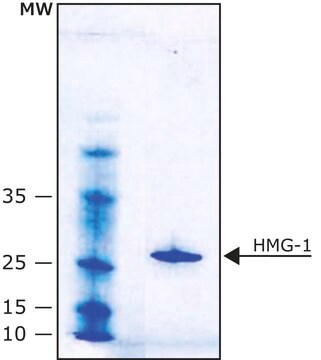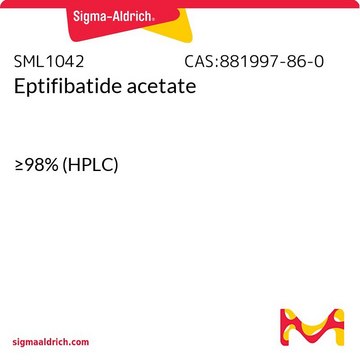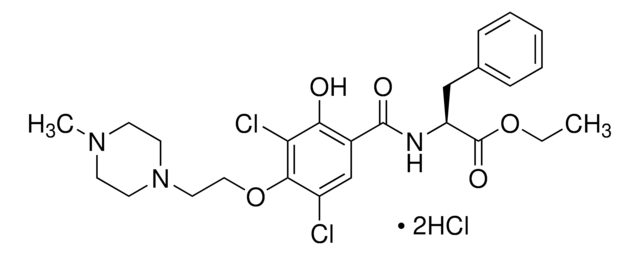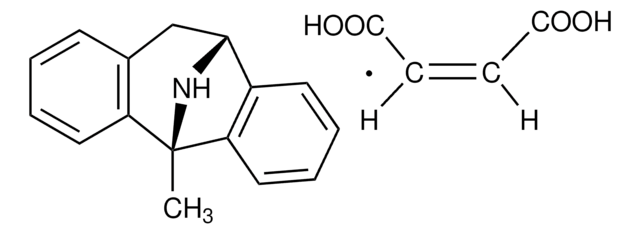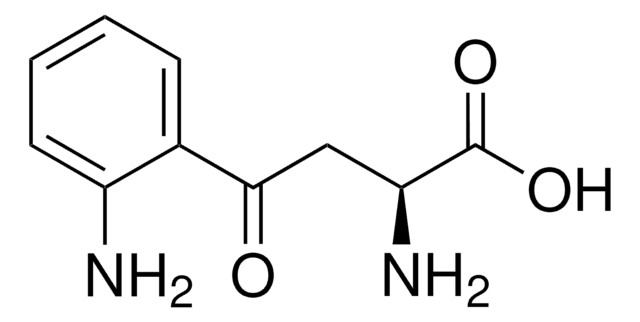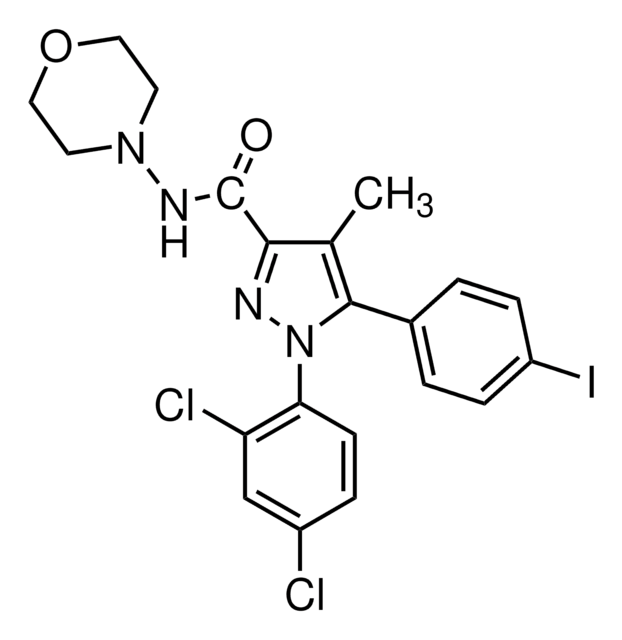SRP6265
HMGB1/HMG1 human
recombinant, expressed in HEK 293 cells, ≥95% (SDS-PAGE)
Sinónimos:
HMG1, HMG3, HMGB1, SBP-1
About This Item
Productos recomendados
biological source
human
recombinant
expressed in HEK 293 cells
tag
6-His tagged (C-terminus)
assay
≥95% (SDS-PAGE)
form
lyophilized powder
potency
0.22 μg/mL
mol wt
calculated mol wt 25.7 kDa
observed mol wt 28 kDa (DTT-reduced. Protein migrates due to glycosylation. Phe17 is the predicted N-terminus.)
observed mol wt 32 kDa
packaging
pkg of 10 μg
impurities
<1 EU/μg endotoxin (LAL test)
UniProt accession no.
shipped in
wet ice
storage temp.
−20°C
Gene Information
human ... HMGB1(3146)
General description
Application
Biochem/physiol Actions
Physical form
Reconstitution
Storage Class
11 - Combustible Solids
wgk_germany
WGK 3
flash_point_f
Not applicable
flash_point_c
Not applicable
Elija entre una de las versiones más recientes:
Certificados de análisis (COA)
¿No ve la versión correcta?
Si necesita una versión concreta, puede buscar un certificado específico por el número de lote.
¿Ya tiene este producto?
Encuentre la documentación para los productos que ha comprado recientemente en la Biblioteca de documentos.
Nuestro equipo de científicos tiene experiencia en todas las áreas de investigación: Ciencias de la vida, Ciencia de los materiales, Síntesis química, Cromatografía, Analítica y muchas otras.
Póngase en contacto con el Servicio técnico